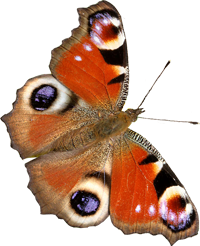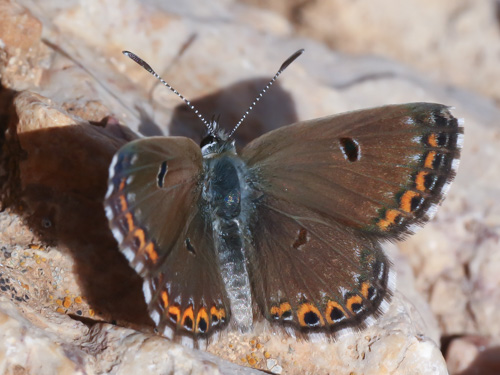
Middle Atlas, Morocco, August 2019
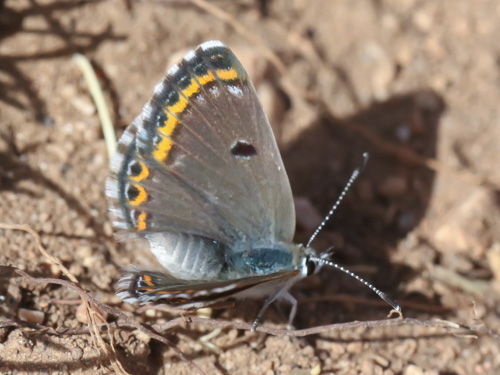
Middle Atlas, Morocco, August 2019
Field notes and information
An extremely local butterfly known from just a few colonies in Morocco. As this species has always intrigued me and been a species I've really wanted to see. My chance came just days before the infamous 11th September 2001.
It was sad to see that the ancient giant Cedars that characterise this region of the Middle Atlas are dying - young trees are being chewed up by the goat plague so the next generation is at serious risk of failling to achieve reproductive age. Even more concerning is the practice of cutting down the limited scrub for a) fire wood and b) let the goats eat otherwise inaccessible foliage. Even the scrub's existence is limited as regrowth is chewed back as soon as it pokes its first leaves above the ground. All that will be left soon is the Geranium, a few whips of grass and the fiersomely prickly cushion plants dotted about the hillside.
Identification & Similar species: No other species are similar to this one. It is extremely unlikely to be discovered casually.
Distribution & Flight: It has an extraordinarily limited known range. When I was looking for it in 2001 there were only 4 known sites in the world for this species. All were in Morocco - 3 in the Middle Atlas mountains where it flies in August/ September and one in the western High Atlas where it flies in May. It has since been discovered elsewhere in the eastern High Atlas where it is reportedly double brooded - May and August/ September.
I understand a lot of effort has been put in over the years to find other sites. I suspect it is more widespread than this but it is such an inconspicuous butterfly. It flies low between stones and pebbles almost touching the ground. It is difficult to spot, very difficult to follow in flight and it does not wander far from its small colonies. Coupled with this the hostility and inaccessibility of its environment makes searching for it particularly difficult. Even the duration of flight during the day is limited to the morning only, a great drop in activity being noted at roughly midday on both our visits to this site.
Habitat & Behaviour: Its habitat is a very dry rocky place. As with the entire countryside of Morocco, goats have ravaged this place. Fortunately the larval foodplant is very low growing and inconspicuous and either avoids or more likely withstands the ravages of goats.
I witnessed one instance of courting. The female flies a short distance allowing the male to catch up. She vibrates her wings in an unusual fashion - very short beats but incredibly fast. The male approaches, joins in the wing vibrating and then she'd fly on again. After about 5 minutes the male lost sight of the female and the courtship ended in failure.
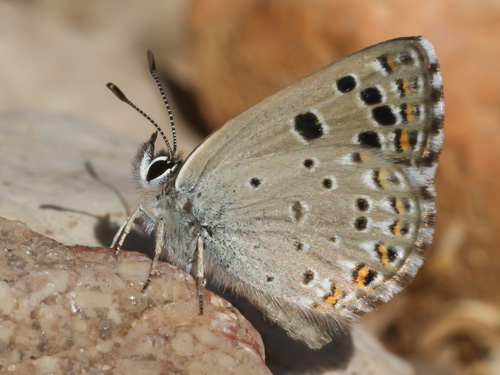
Middle Atlas, Morocco, August 2019
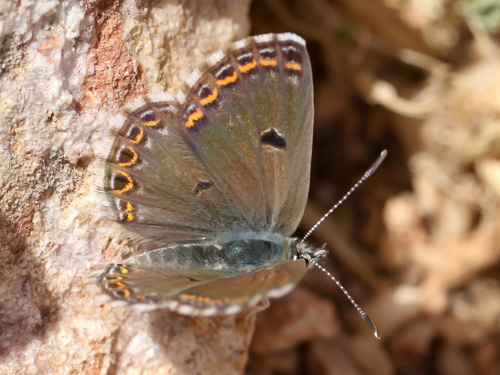
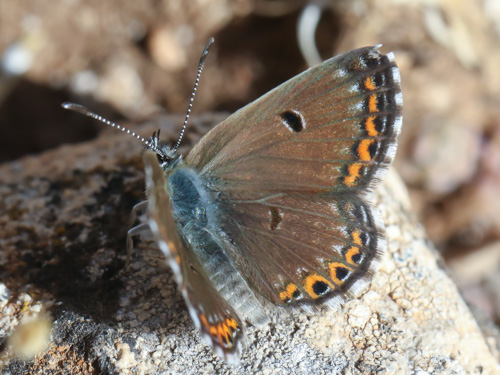
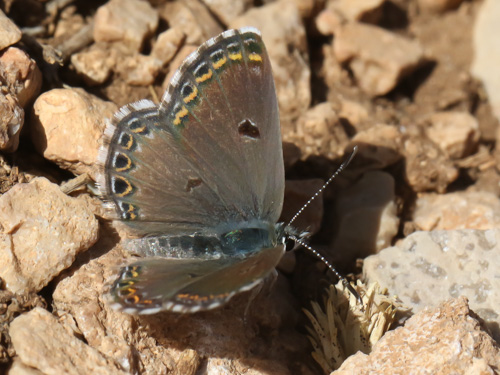
Middle Atlas, Morocco, August 2019
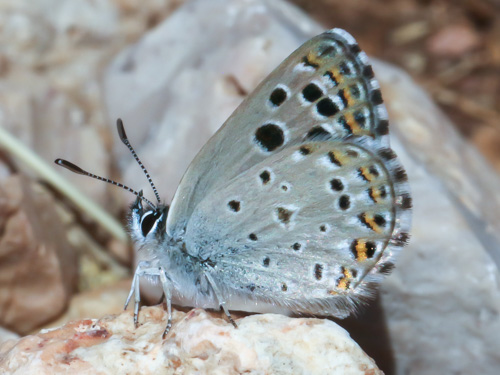
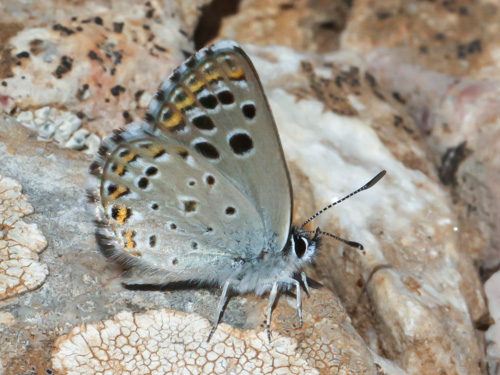
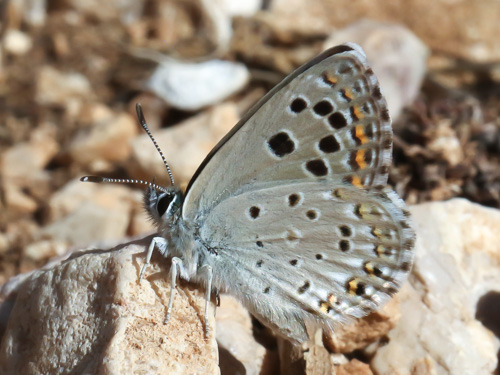
Middle Atlas, Morocco, August 2019
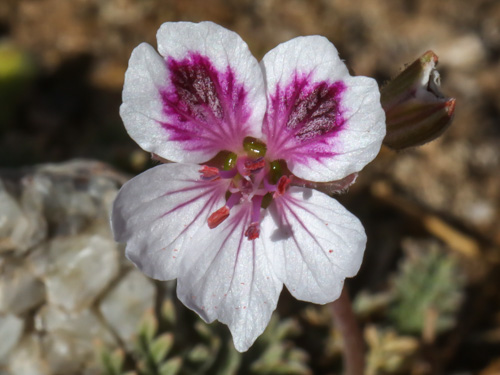
Middle Atlas, Morocco, August 2019
Larval food plant Erodium cheilanthifolium.
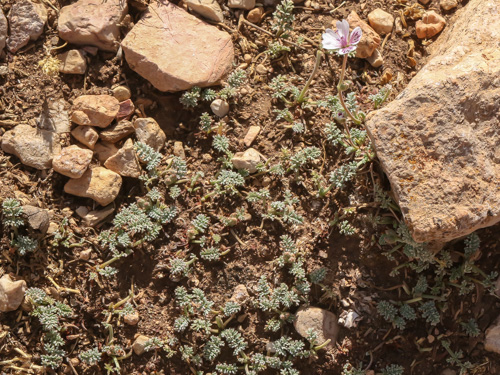
Middle Atlas, Morocco, August 2019
Larval food plant Erodium cheilanthifolium.
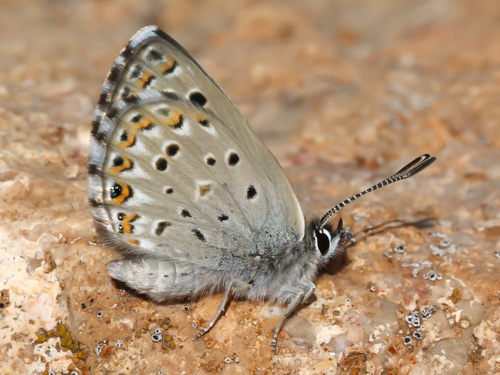
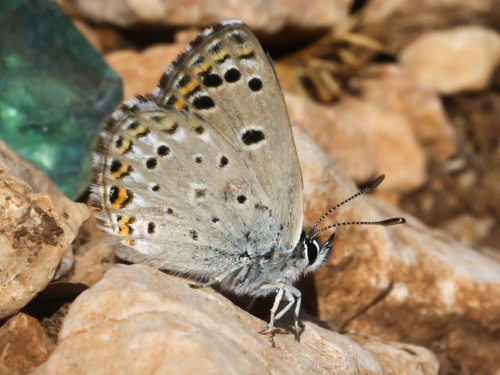
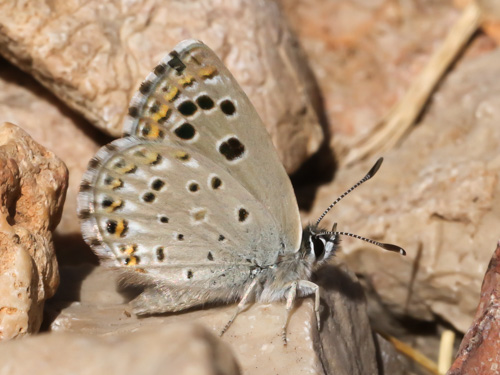
Middle Atlas, Morocco, August 2019
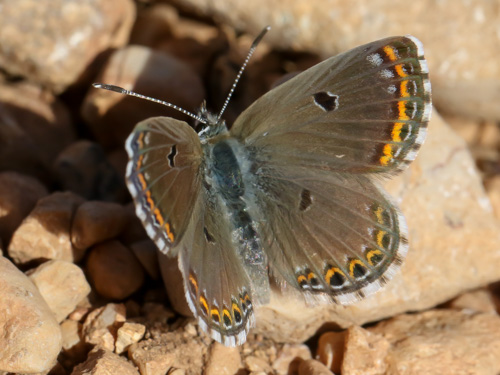
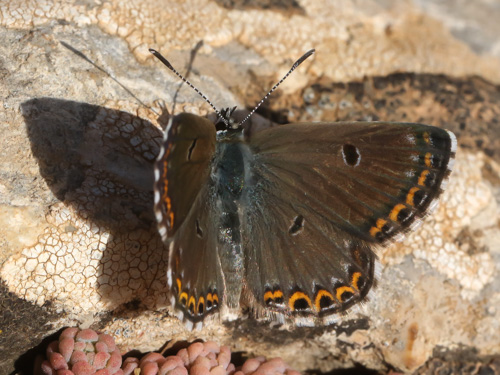
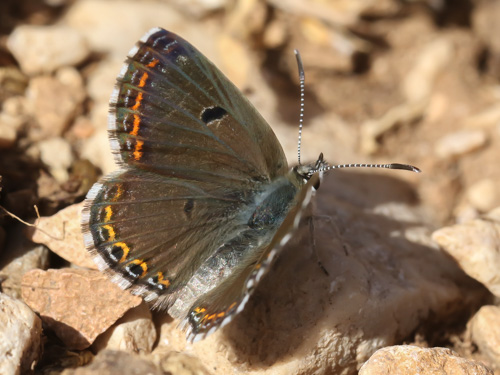
Middle Atlas, Morocco, August 2019
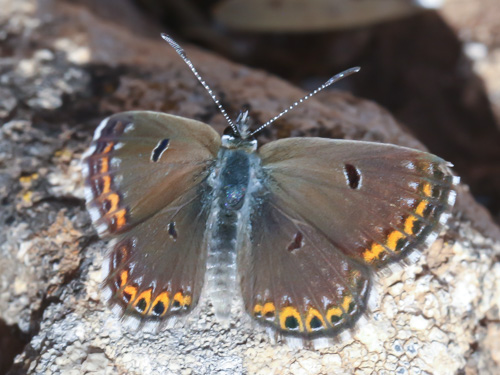
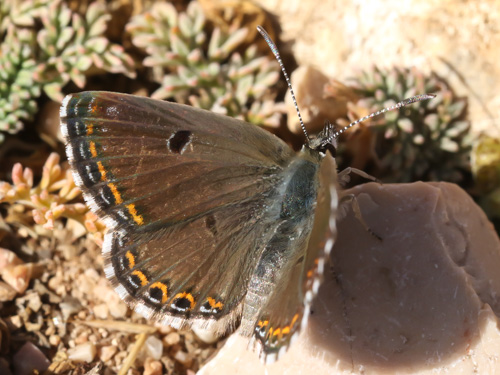
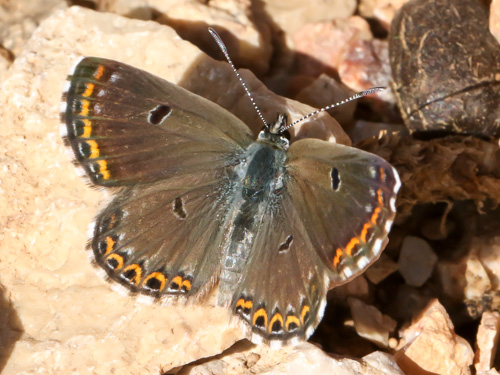
fMiddle Atlas, Morocco, August 2019
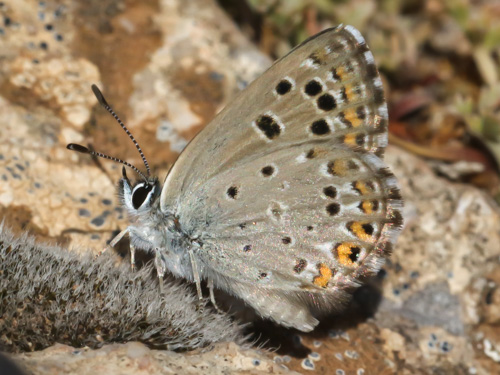
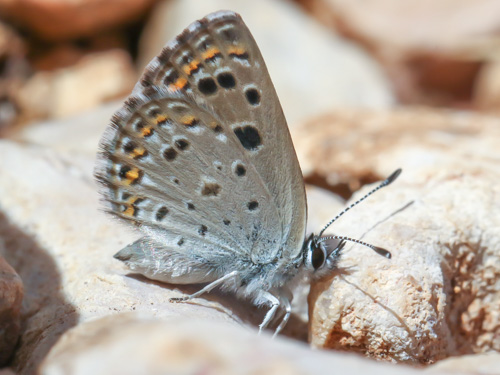
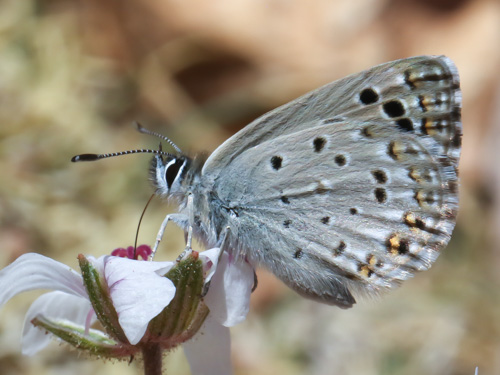
Middle Atlas, Morocco, August 2019
